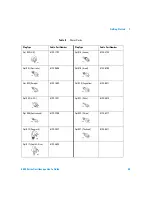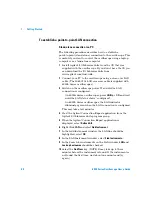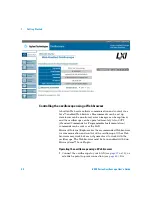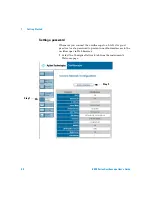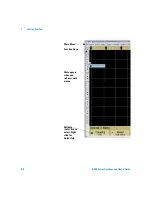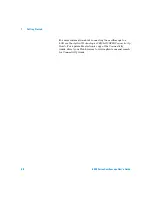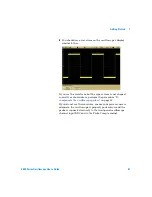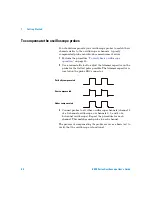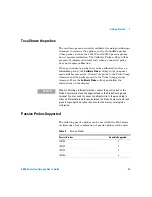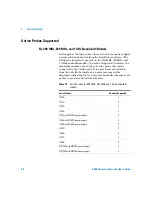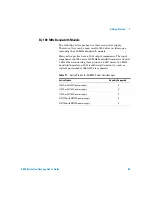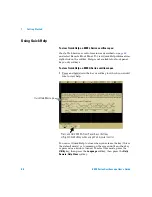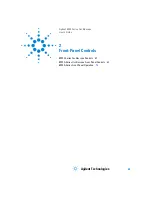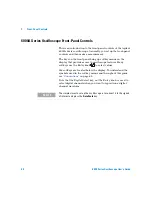
Getting Started
1
6000 Series Oscilloscope User’s Guide
49
To connect the oscilloscope probes
The analog input impedance of the 100 MHz oscilloscopes is
fixed at 1 M
Ω
. The 1 M
Ω
mode is for use with many passive
probes and for general purpose measurements. The high
impedance minimizes the loading effect of the oscilloscope on
the circuit under test. If a 50
Ω
input impedance is required,
attach a 50 ohm feedthrough termination adapter such as
Agilent part number 0960-0301 to the oscilloscope’s channel
input BNC connector.
The analog input impedance of the 300 MHz, 500 MHz, and
1 GHz oscilloscopes can be set to either 50
Ω
or 1 M
Ω
. The 50
Ω
mode matches 50
Ω
cables and some active probes commonly
used in making high frequency measurements. This impedance
matching gives you the most accurate measurements since
reflections are minimized along the signal path.
1
Connect the supplied oscilloscope probe to an oscilloscope
channel BNC connector on the front panel of the
oscilloscope.
2
Connect the retractable hook tip on the probe tip to the
circuit point of interest. Be sure to connect the probe ground
lead to a ground point on the circuit.
C A U T I O N
Do not exceed 5 Vrms at the BNC in 50
Ω
mode on the Agilent 6000
Series oscilloscopes. Input protection is enabled in 50
Ω
mode and the
50
Ω
load will disconnect if greater than 5 Vrms is detected. However
the inputs could still be damaged, depending on the time constant of
the signal. The 50
Ω
input protection mode on the Agilent 6000 Series
oscilloscopes only functions when the oscilloscope is powered on.
C A U T I O N
The probe ground lead is connected to the oscilloscope chassis and
the ground wire in the power cord. If you need to measure between
two live points, use a differential probe. Defeating the ground
connection and “floating” the oscilloscope chassis will probably result
in inaccurate measurements.
Summary of Contents for InfiniiVision DSO6014L
Page 2: ...Agilent Technologies Agilent 6000 Series Oscilloscopes User s Guide...
Page 59: ...58 6000 Series Oscilloscope User s Guide 1 Getting Started...
Page 109: ...108 6000 Series Oscilloscope User s Guide 2 Front Panel Controls...
Page 125: ...124 6000 Series Oscilloscope User s Guide 3 Viewing and Measuring Digital Signals...
Page 251: ...250 6000 Series Oscilloscope User s Guide 5 Making Measurements...
Page 287: ...286 6000 Series Oscilloscope User s Guide 6 Displaying Data Interpreting Decoded LIN Data...
Page 321: ...320 6000 Series Oscilloscope User s Guide 7 Saving and Printing Data...
Page 370: ......

